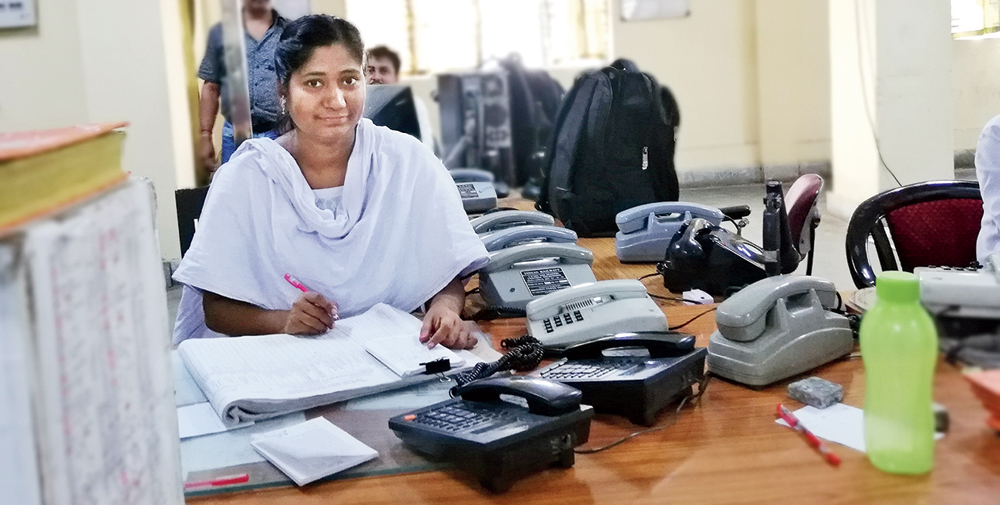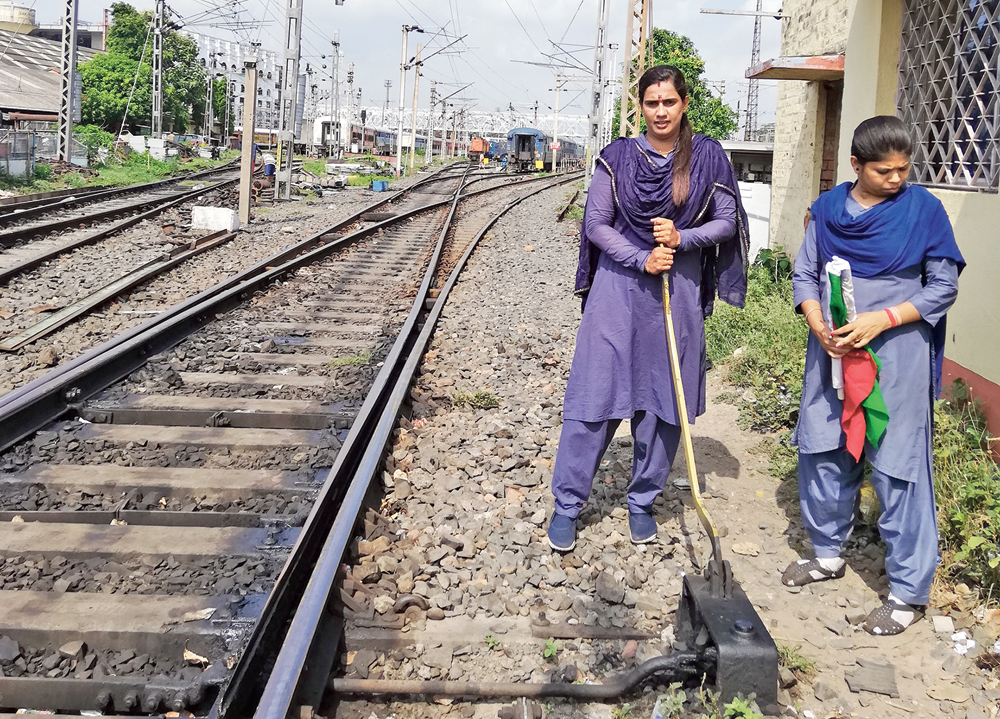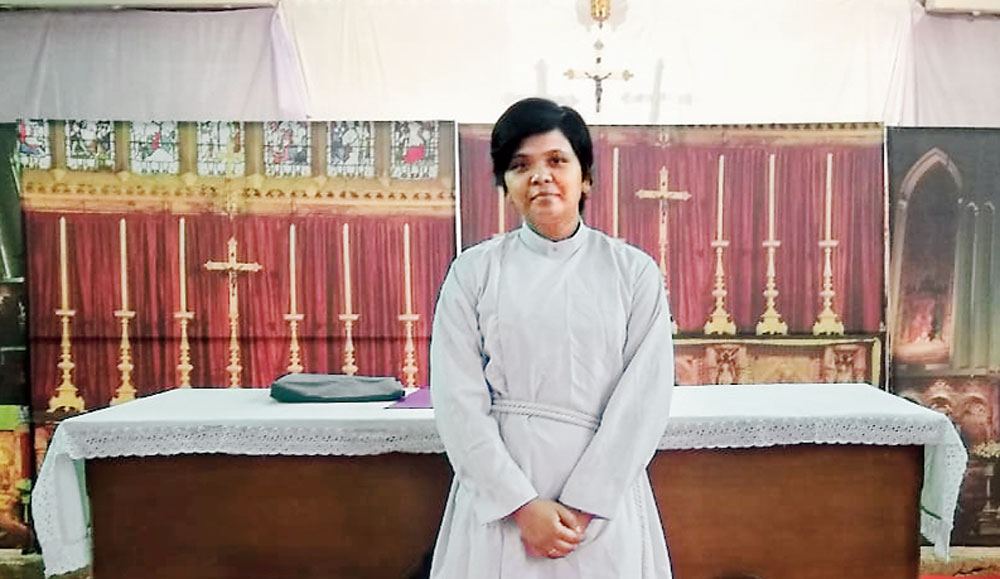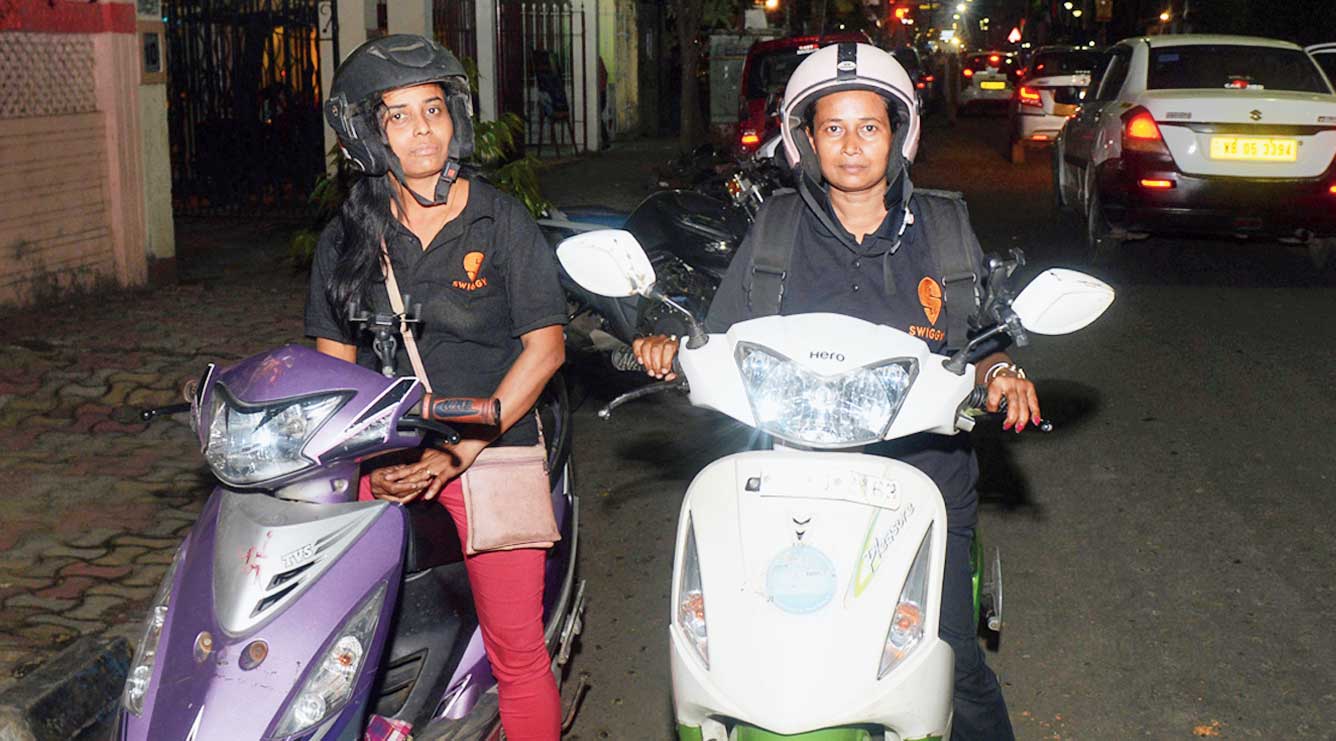Pritilata Mondal is a railway mechanic. She works at the railway yard of the Santragachi station of the South Eastern Railways. Earlier this year, the railway authorities released a video of her day at work on YouTube. It was about how she got a job in the railways, how she was recruited as a mechanic though she had no technical knowledge about wagons, how she inspects wagons, repairs glitches and hammers the nuts and bolts back in place and so on and so forth. Says the chief public relations officer of the South Eastern Railways, Sanjay Ghosh, “In our division, we have employed many women who do tough mechanical and technical jobs. There is nothing that a woman cannot do. To encourage our women workers we have made videos of them and shared them online.”
Santragachi station is 10 kilometres from the heart of Calcutta. Station manager Dhananjay Singh says, “It is one of the busiest junctions and our staff has to be on the toes all the time.” Among them there is a large number of women, including three stationmasters, to manage traffic.
On the top floor of a four-storey building, Stationmaster Debasmita Biswas is at work. She is sitting with what looks like a dozen landlines — black, blue, grey and off-white. She is receiving call after call, writing down arrival and departure timings of trains, updating the cabin master about it, “Up-e local, middle-e 4461, 14 down, 423… 4461 is approaching on the middle track and 14 down is also approaching, 423…” Before she can complete, one of the phones starts to ring.
It is a biggish room with four people at work. They are facing a huge white panel on which there are several yellow and red dotted lines running parallel to each other — they represent railway tracks. The panel is consulted to control the movement of trains.
The cabin master, who is Debasmita’s boss, is constantly dictating instructions to the man in front of the panel. “Put the down train on this line. Up train on the line above...” No chitter chatter can happen here, no room for distraction. “A small mistake might lead to a huge disaster,” says Singh.

Poinstman B Sunita Dubey Picture by Moumita Chaudhuri
I catch Debasmita when she takes a 15-minute break. She is quite the express train herself, with her speedy and impassioned commentary.
“There are 10 landlines here — three for the gates [railway crossings], one for the section controller [who controls the movement of trains in a particular section] and the rest are of various stations adjoining Santragachi — Shalimar, Andul, Tikiapara, Amta, Maurigram,” she rattles away. She says she sometimes hears the announcers’ voices in her dreams. The Bengali Honours graduate says she had appeared for more than one competitive exam and qualified for jobs in four government departments. Three years ago, she decided to join the railways.
According to Singh, it’s true that Debasmita’s job is challenging, but the women working at the yard have to labour harder and their job involves physical labour. Such as what? “Such as Pointsman B. The person holding this post has to physically shift the railway tracks, by using a pulley, and link them to help a train change tracks,” he says. “Manoeuvring the pulley requires muscle power and technical knowledge,” says Dhaumya C. The volleyball player from Kerala who got the job in the sports quota has been a Pointsman B since 2007. She still plays for the S.E. Railways’ volleyball team.
For many of the women employed here, the railway job is first about filling empty shoes. Pritilata got the job after her husband died. Sumita Pal, who also holds the post of Poinstman B, joined after her father opted for voluntary retirement. Like the others, she has been trained at the railways school in Kharagpur. “We have to make sure that the tracks have been joined properly and there is no gap or else the train will get derailed,” she explains.
Dhaumya is waiting for her next promotion. “It is the post of the cufflink cutter. One has to join a compartment to another. It involves hard manual labour,” she says as she stands waving a green flag at an approaching train after having set the tracks in place.

Stationmaster Debasmita Biswas Picture by Moumita Chaudhuri
Half a kilometre away from the railway yard is the rail crossing. Sunita Dubey, another Pointsman B, is waiting for the local trains to pass. After a train pulls out of the station, she presses a green button, the pole that acts as a barrier goes up and the traffic starts to flow once again. Her workstation is a small room positioned such that she can observe the up and the down trains from either side of her cabin. She says, “The challenge is when the up train and the down train arrive at the same time and I have to signal to both.”
Sunita’s shift is either from six in the morning or from two in the afternoon. “The second shift ends at 10 in the night,” she says. As a woman gateman, this is the relaxation she is allowed. There are no night shifts. “But this is true for all the women workers here. And for Sunita, this is a must as her workstation is quite far away from the Santragachi station,” says Singh.
The Indian Railways is probably one of the largest employers in the country to date. As per the Indian Railways Statistical Publication 2016-17, 13,08,000 people were employed as on March 31, 2017. Of these, one lakh are women and that number has been increasing since.
Ghosh of S.E. Railways talks about women who are working at the other stations that come under the S.E. Railways. He says, “Krishna Ghosh and Chitra Mahato are electrical maintenance staff at Girni Station in Jhargram. They go up the iron electric poles and repair the overhead lines. Then there is Deepali Amrit who is the assistant loco pilot for the goods train in the Ranchi division. Parvati Dome is stationed as a women guard in Purulia.”
“Nothing is impossible, you see,” he signs off.













